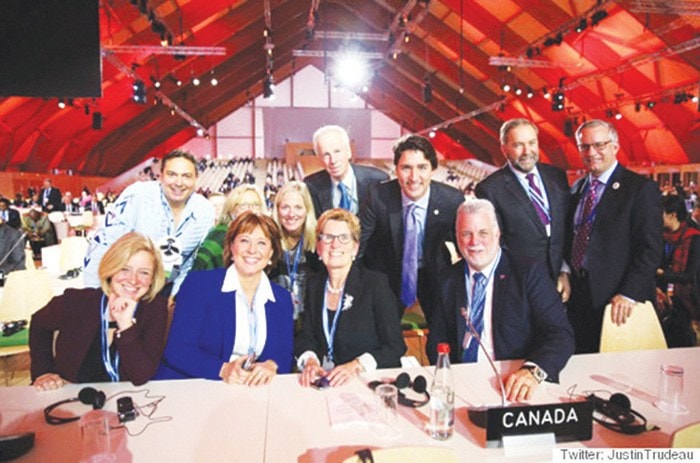December 11, same day an ‘historic’ agreement on climate change was celebrated by 200 nations attending the United Nations COP21 conference in Paris, was celebrated by 24 BC communities – including Ladysmith and Duncan – as A Day for Our Common Future.
A media release from the Vancouver Island & Coast Conservation Society, which is located in Cedar, noted that the Province of British Columbia also marked the day on its official calendar for the second year.
“Every year we see an increasing interest, and recognition of the achievements for sustainable development which the World Commission on Environment and Development first advanced with publication of the book ‘Our Common Future”, said VICCS President Laurie Gourlay.
The Proclamation notes key goals and achievements which the Brundtland report helped to identify and to champion in its efforts to find a practical and principled balance between the environment and economy, states the VICCS release.
Signatories of the proclamation agree with the opening statement, that “our long-term economic, social, ecological and cultural goals form the four pillars of sustainable development.”
That commitment to a holistic approach to development is further defined in the third statement, which embraces development that “meets the needs of the present without compromising the ability of future generations to meet their own needs.”
In order to achieve sustainable development, signatories agree that communities must “include measures for conservation, biodiversity, habitat and watershed protection that integrate renewable resource, climate-adaptive and sustainable development initiatives” in their planning.
Delegates to the COP21 meeting in Paris have agreed to:
• Limit temperature rise to ‘well below’ two degrees Celsius – with the limit of 1.5 degrees as the long-term objective;
• Implement an agreement that is ‘universal’ and ‘legally binding’;
• Provide “$100 billion annually to developing countries by 2020” to help them combat climate change;
• Insist that nations publish greenhouse gas reduction targets that reflect the “highest possible ambition,” and are revised every five years starting in 2013;
• Achieve carbon neutral economies sometime after 2050 but before 2100.
The COP21 agreement comes as a resounding affirmation of actions taken at the local level to align with the 1987 Brundtland commissions report, Gourlay said
“We see local governments and communities working hard to implement the pragmatic applications of sustainable development, with senior governments integrating policies and programs,” she said.
